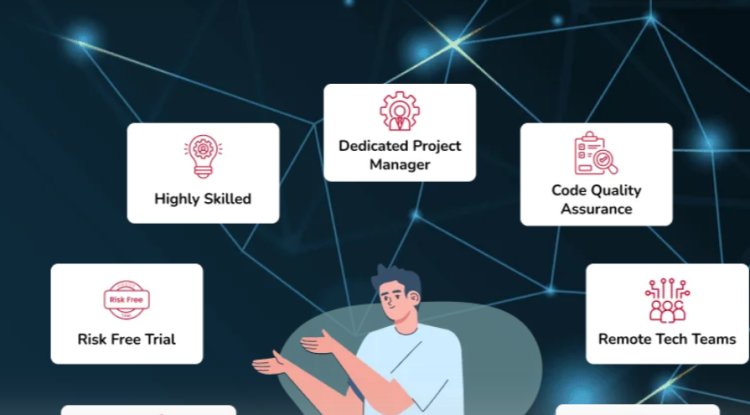The Importance of Requirement Analysis in Custom Software Development
Custom software development services from a pro IT company. Full-cycle custom application development.
Share this Post to earn Money ( Upto ₹100 per 1000 Views )

The complex process of developing custom software is designed to satisfy the particular requirements of companies and organizations. Among the various stages of this process, requirement analysis stands out as a crucial phase. A well-done requirement analysis guarantees that the finished product works well and is in line with the client's vision.
This blog post delves into the importance of requirement analysis in custom software development, highlighting its benefits and significance through specific examples and anecdotes.
What is Requirement Analysis?
Identification, documentation, and management of stakeholder needs and expectations for a software project are all part of requirement analysis, often called requirements engineering. This process helps define what the software should do, who will use it, and under what conditions it will operate.
Benefits of Requirement Analysis
1. Clarity and Understanding
Requirement analysis makes sure that everyone knows exactly what the project involves. Technical requirements can be created by developers by obtaining comprehensive information from stakeholders.
Example: Consider a retail company wanting a custom inventory management system. Without proper requirement analysis, developers might miss out on specific features like real-time stock updates or integration with existing point-of-sale systemsThrough comprehensive requirement analysis, developers can make sure that all essential functionalities are incorporated.
2. Prevents Scope Creep
The term "scope creep" describes unplanned adjustments or ongoing expansion of a project's scope. It often results from unclear or poorly defined requirements.
Example: A healthcare startup once embarked on developing a patient management system. Initially, they requested basic patient record features. As development progressed, they kept adding new features like appointment scheduling and telehealth integration. Proper requirement analysis at the beginning could have identified these needs, preventing delays and budget overruns.
3. Improves Planning and Estimation
Precise requirement analysis facilitates improved project scheduling and cost estimation. This results in reasonable expectations and effective use of available resources.
Example: An e-commerce platform project faced delays because the initial time estimates didn't account for the complexities of integrating multiple payment gateways. With detailed requirement analysis, the development team could have anticipated these challenges and planned accordingly.
4. Enhances Quality and Performance
When requirements are well-defined, developers can focus on building a product that meets these specifications, reducing the chances of errors and rework. This results in a higher-quality product.
Example: A financial services firm requires a custom CRM system. Through comprehensive requirement analysis, developers identified the need for robust data security features. This foresight ensured the final product was secure and compliant with industry regulations, enhancing its performance and reliability.
5. Increases Stakeholder Satisfaction
Engaging stakeholders in the requirement analysis process ensures their needs are understood and met. This leads to higher satisfaction with the final product.
Example: A university needed a custom student information system. By involving faculty, administrative staff, and students in the requirement analysis phase, the development team ensured the system catered to all user groups, resulting in high stakeholder satisfaction.
6. Reduces Risks
Early risk identification in the project enables the development of mitigation solutions, which lessen the impact of prospective risks. t.
Example: A logistics company faced potential risks in developing a custom fleet management system due to fluctuating fuel prices and regulatory changes. Requirement analysis helped identify these risks early, allowing the development team to incorporate flexible features that could adapt to such changes.
Practical Tips for Effective Requirement Analysis
1. Engage Stakeholders
As soon as possible, involve every relevant stakeholder. In creating thorough requirements, their input is crucial.
2. Use Visual Aids
Visual aids that let stakeholders see the finished result, such as flowcharts, wireframes, and prototypes, make it simpler to collect precise requirements.
3. Prioritize Requirements
Not all requirements have equal importance. Prioritize them based on business needs, feasibility, and impact on the project.
4. Document Everything
Ensure all requirements are well-documented and accessible to all team members. This documentation serves as a reference throughout the development process.
5. Regular Reviews
Conduct regular reviews of the requirements with stakeholders to ensure they remain relevant and accurate as the project progresses.
Requirement analysis is a foundational step in custom software development that can make or break a project. It ensures clarity, prevents scope creep, improves planning, enhances quality, increases stakeholder satisfaction, and reduces risks. By investing time and effort in thorough requirement analysis, businesses can pave the way for successful software development projects that meet their specific needs and deliver tangible value.

 Arna101
Arna101 














